- Author: Kathy Keatley Garvey
"The Secret World of Insects" won't be so secret any more on Wednesday, June 3.
That's when a public exhibit and reception will take place to celebrate the work of Entomology 1 students, University of California, Davis.
The event takes place from 5 to 8 p.m., in the Third Space Art Collective, 946 Olive Drive.
The main instructor of Entomology 1 is Diane Ullman, professor of entomology, UC Davis Department of Entomology and Nematology, and an accomplished artist. She co-founded and co-directed the UC Davis Art/Science Fusion Program.
"We had four sections this quarter," Ullman said. Some 70 students participated.
- Ceramics. The students created a screen-printed tile mosaic about evolution of the soapberry bug with the support and scientific advice of Jenella Loye and Scott Carroll of the Sharon Lawler lab, UC Davis Department of Entomology and Nematology. Carroll is the director of the UC Davis Institute for Contemporary Evolution. Also, this quarter, self-described rock artist Donna Billick, co-founder and former co-director of the UC Davis Art/Science Fusion Program, assisted the students.
- Sculpture with reuse materials. The students made sculptural story boards about insects.
- Painting and multimedia.The students did trip tic-like canvases about a diversity of insects.
- Bioart. The students created insect drawings with fungi on agar.
Allison Simler, Vivian Ye and Anna Davidson (Evolution and Ecology, Design and Studio Art) served as teaching assistants.

- Author: Kathy Keatley Garvey

You could, but you wouldn't.
O'Donnell, a noted USDA thrips expert and educator with three degrees from the University of California, Davis, knows well those tiny insects that cause billions worth of damage annually to U.S. agricultural crops. She's studied thrips for 18 years and worked on thrips programs with the U.S. Department of Agriculture (USDA) for the last seven years.
Today O'Donnell continues to target thrips in her new position with the USDA. As of April 6, she is the National Thysanoptera Taxonomist with the National Identification Services (NIS) at the Systematic Entomology Laboratory (SEL) in Beltsville, MD.
Specifically, her position is with the National Identification Services (NIS) of the Plant Protection and Quarantine (PPQ) program of USDA's Animal and Plant Health Inspection Service (APHIS) or what USDA officials refer to as "APHIS PPQ NIS." The Thysanoptera collection of the Systematic Entomology Laboratory (SEL) is housed with USDA's Agricultural Research Service (ARS).
“I love my work,” she said, “and I love my favorite insect, thrips.”
"Cheryle is a tremendously talented biologist and she holds a real fascination for thrips, their classification, host relationships and biology," said former major professor Diane Ullman, professor in the UC Davis Department of Entomology and Nematology. "She will do a fantastic job in this position, which will be important to the global community studying thrips and trying to develop management strategies."
The Beltsville position, last held in 1999 by mentor Sueo Nakahara, will involve working for National Identification Services in the Agricultural Research Station and with the National Museum of Natural History Thysanoptera collection.

Thrips, barely visible to the naked eye, heavily damage fruits, vegetable and horticultural crops, so much so that they can—and do--pose a biosecurity threat. In 1996, Cuba's Fidel Castro accused the United States of aerially releasing Thrips palmi over potato fields.
“Of the more than 5000 species of thrips known in the world, some are serious pests, and some are beneficial as pollinators and predators,” O'Donnell said. “Some thrips transmit plant diseases, such as the tomato spotted wilt virus and the Impatients necrotic spot viruses.”
“To monitor agricultural crops effectively, it's important to be able to identify them, but it's difficult to do so without understanding thrips taxonomy and identification,” O'Donnell said. “Thrips are so small—one millimeter long or less--that they're like a speck. Inspectors see larvae, eggs and adults on plant material coming in. It's difficult to separate species at the life stage of eggs, larvae and adult males.”
O'Donnell recalled that her first position with USDA was as an area identifier of thrips. “It encompassed the identification of pests intercepted in cargo and baggage from origins around the world,” she said. “ My first assignment was at the Plant Inspection Station in Nogales, Ariz., one of the largest Mexican produce importing ports. I then transferred to Florida to the Miami Plant Inspection Station where the majority of cut flowers enter into the U.S. from Central and South America.“ She also saw temporary duty in Blaine, Wash., as an identifier and then transferred to the Plant Inspection Station in San Diego.
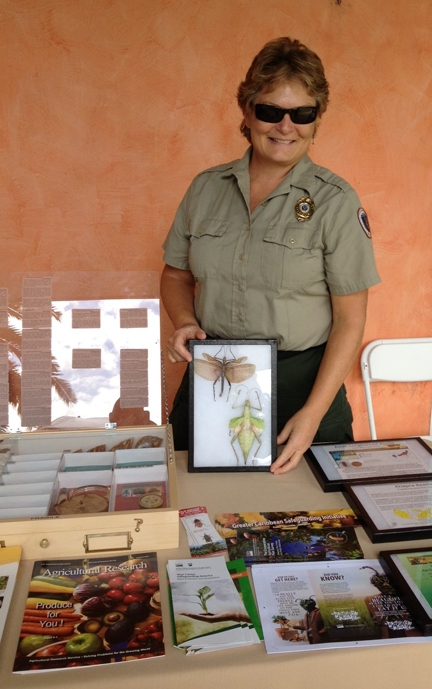
"In Miami, thrips larvae are intercepted regularly on cut flowers coming into the U.S. from south and Central America," O'Donnell said. "We did not have the tools to separate the quarantine significant thrips from those that are not of concern at the larval stage. My suspicion has been that there were a handful of thrips species of concern whereas the majority were not. The PPQ agency developed a pilot program to conduct molecular pilot program in Miami which may lead to a policy change in how we make quarantine decisions regarding the larvae intercepted. I have been the coordinator of this pilot program."
"There were several thrips species coming in from Mexico listed as quarantine significant that I knew to be found within the U.S. and those species have been removed from the quarantine status."
O'Donnell published “job aids” on the USDA website that include multilevel and gender identification, plus digital imaging. Over the last decade, she has organized and conducted thrips workshops, produced videos, and published research. She edited a monthly Pest Interception Report and co-edited the Looking Glass quarterly journal on activities at plant inspection stations. She also conducted outreach sessions at schools, universities and trade shows.
Learning about thrips came naturally. "I follow in the footsteps of my great uncles and my father," O'Donnell related. "My uncle, Richard Clemens, worked for CDFA at the port of Los Angeles and at the ferry building in San Francisco. My uncle, Michael Clemens, worked with CDFA in Smith River and Winterhaven, CA. Both were looking for agricultural pests of quarantine significance. Last year in San Diego when I was cleaning out some older documents at the plant inspection station, I found a request and a few letters (1940s) from my uncle Richard Clemens asking the area identifier in San Diego at the time for information on new pests he found in California. It's a small world!"

O'Donnell arrived at UC Davis in the mid-1990s as a single mom raising a young daughter. A former employee of an electronic manufacturing business, she enrolled at UC Davis to study ornamental horticulture. At the same time she managed a landscaping business.
“There were many times I was doubtful that I could continue to meet the demands of my chosen field,” O'Donnell said, crediting her family, friends and UC Davis scientists with offering her the support she needed to complete her education.
“When I began my education at UC Davis I chose Agricultural Systems and the Environment as my major. However, while working on my bachelor's degree I became infatuated with insects and their interaction with plants,” she said, which led to her endearing nickname, “The Bug Lady.”
“I continued my academic career in entomology and have never regretted that decision. I was privileged to study under the guidance of Professors Michael Parrella and Diane Ullman.” They, along with Professors Jay Rosenheim, Lynn Kimsey and Penny Gullan “became not only my instructors, guidance counselors, but also my mentors throughout my years at UC Davis.”

Parrella and O'Donnell collaborated with Moritz, (University of Halle-Wittenberg in Germany) on a grant to produce a molecular and morphological identification key, now available online.
An avid entomologist with a passion for soft spot for thrips—“my favorite insect!”--O'Donnell takes every opportunity to discuss the insect order, Thysanoptera, and train others to identify them. She provides training tools and workshops to assist with identification and curation of thrips.
In addition to her doctorate, O'Donnell holds two other degrees from UC Davis: a bachelor's in agricultural systems and the environment (1997) and a master's degree in plant protection and pest management (2000). Her master's thesis: “The Biology and Identification of Selected North American Thysanoptera Associated with Ornamental Plants.” Her dissertation covered “Color Morphology of the Western flower thrips in California and virus-vector relationships of members in the Terebrantia: Thysanoptera (a molecular and morphological analysis).” She praised her advisors, Penny Gullan, insect systematics; Diane Ullman, virus vectors; Steve Nadler, molecular phylogeny; and Parrella, integrated pest management.
While at UC Davis, O'Donnell organized and conducted a three-day thrips workshop funded by a biosecurity grant from USDA. It drew a capacity crowd.
The UC Davis-product encourages students to follow their dreams. “Focus on your goals, never deviate from those goals, and never allow obstacles to get in the way,” she advises. It is a difficult and challenging path you have chosen but it will be worth all the hard work. The UC Davis community, the ‘village' which supports you, is an experience you will never forget and the payoff will be great throughout your life.”
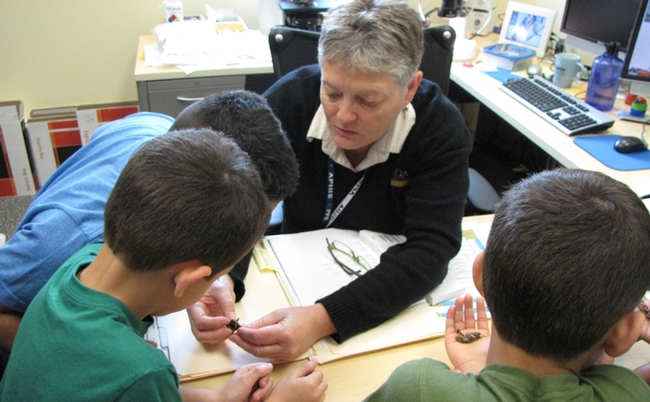
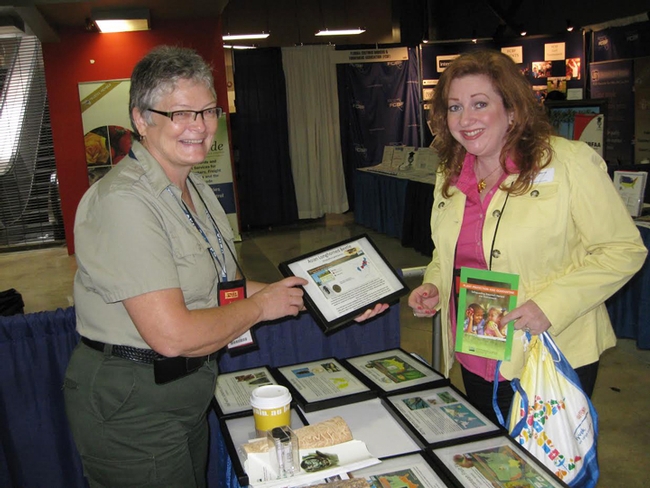

- Author: Kathy Keatley Garvey
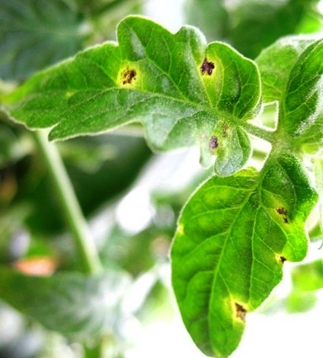
He will be hosted by colleague and collaborator Diane Ullman, professor of entomology at UC Davis.
"Thrips-transmitted, tomato spotted wilt virus (TSWV), which has an extremely broad host range and is transmitted exclusively by thrips, ranks among the most economically important plant viruses affecting crops worldwide," Kennedy says in his abstract.
"Effective management of this virus in commercial crop production systems requires an understanding of the factors that determine the timing and magnitude of virus spread. This seminar will discuss the ways in which seasonal weather events influence the dispersal dynamics of vector thrips populations, the abundance of virus inoculum sources in the landscape, and ultimately the timing and magnitude of TSWV spread into susceptible crops. It will further provide an illustration of how efforts to model these relationships improved understanding of the epidemiology of TSWV and led to the development of a TSWV risk prediction tool that is now being used in pest management decision making."
Kennedy, past president of the Entomological Society of America (ESA), is an ESA fellow, recipient of the ESA's Award for Excellence in Entomology and chaired the Entomological Foundation, a non-profit educational foundation whose mission is “to excite and educate young people about science through insects.”
He also served as program manager for the National Research Initiative, affiliated with the U.S. Department of Agriculture (USDA), and on numerous advisory panels for the USDA, U.S. Environmental Protection Agency and the National Research Council, addressing issues relating to pesticides, pest resistance, integrated pest management, and biotechnology.
Kennedy holds a bachelor's degree in entomology from Oregon State University and a doctorate in entomology from Cornel University. He served as assistant professor of entomology at UC Riverside from 1974-1976, before joining the faculty at North Carolina State University.
See his biosketch on the ESA website.
Kennedy writes on his website: "Research in my program focuses on understanding the ecology and life systems of arthropods affecting agricultural crops and applying that understanding to improve the effectiveness and sustainability of arthropod management in vegetable crops. We study fundamental interactions and processes that influence pest status, population dynamics and the insect/crop interactions that result in damage. We apply the resulting information in combination with new technologies to enhance IPM. Areas of emphasis include insect-plant interactions, resistance management, landscape scale population dynamics, and epidemiology and management of insect transmitted plant viruses. Current research projects focus on understanding the determinants of tospovirus transmission by thrips in relation to epidemiology and management of tomato spotted wilt virus and on the development of reduced risk arthropod management systems for fruiting vegetables. These efforts include both field and laboratory research and collaborations with faculty in Entomology, Horticulture and Plant Pathology at NCSU and colleagues at other institutions. We also work closely with extension colleagues, growers and the agribusiness community to facilitate implementation of new pest management practices."
The seminar will be recorded for later viewing on UCTV Seminars.
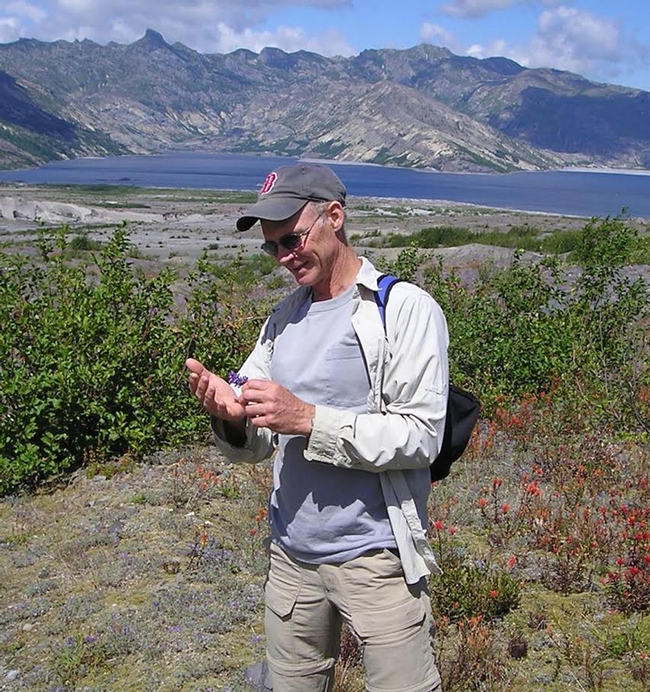
- Author: Kathy Keatley Garvey

One of the names proposed is the Da Vinci Institute.
To discuss the concept, a colloquium will take place from 1 to 5 p.m., Monday, March 16 in Room 3001 of the Plant Environmental Sciences Building. A reception will follow the discussions from 5 to 6 p.m.
"The program for the afternoon is designed to engage the scholars, scientists, and artists of the UC Davis community," said entomologist/artist Diane Ullman, professor of entomology in the UC Davis Department of Entomology and Nematology. "What is the potential for a Da Vinci Institute on our campus? What kinds of program could such an institute generate?"
The keynote speaker will be Roger Malina, distinguished professor of art and technology, and professor of physics at the University of Texas (UT), Dallas. Since 1982, he has served as executive editor of the Leonardo Publications at MIT Press. He founded, and serves on the board of two nonprofits, Leonardo/ISAST in San Francisco and OLATS in Paris, which advocate and document the work of artists involved in contemporary science and technology.
Leonardo/ISAST is an acronym for the Leonardo/International Society for the Arts, Sciences and Technology. OLATS is an acronym for Observatoire Leonardo pour les Arts et les Techno-Sciences.
Malina founded the ArtSciLab in the ATEC Program at UT Dallas in the fall of 2013. This transdisciplinary research lab hosts projects which involve in-depth collaboration between artists and scientists; the aim of the lab is to carry out research which results in art works, scientific data analysis tools, a technology testbed. In addition, the lab develops education activities involving the integration of the arts, design and humanities in science, technology, education and mathematics (STEAM).
The program agenda:
1:00-1:15 Introduction and Goals (Diane Ullman)
1:15-2:15 Keynote Address and Q&A (Roger Malina)
2:15-2:30 BREAK
2:30-3:00 Discussion Breakout Sessions Facilitated By Organizers
3:00-3:30 Large Group Summary Facilitated by Roger Malina and Diane Ullman
3:30-4:00 Discussion Breakout Sessions Facilitated By Organizers
4:00-4:30 Large Group Summary Facilitated by Roger Malina and Diane Ullman
4:30-5:00 Final Thoughts from Roger Malina and Next Steps (Organizers)
5:00-6:00 Reception
Those involved in the formation of the UC Davis based-project include
- Diane Ullman, professor of entomology, UC Davis Department of Entomology and Nematology, who co-founded and co-directed the UC Davis Art/Science Fusion Program
- Terry Nathan, professor of atmospheric science, Department of Land, Air and Water Resources
- Wendy Silk, professor emerita of the Department of Land, Air and Water Resources, and distinguished art scientist
- Colin Milburn, Gary Snyder Chair in Science and the Humanities; and professor of English, Science and Technology, and Cinema and Technocultural Studies, Department of English
- Petr Janata, professor in the Department of Psychology and Center for Mind and Brain.
- Youngsuk Suh, co-chair of the Department of Art and Art History and associate professor of art
- Robin Hill, professor, Art Studio, Department of Art and Art History
- Timothy Hyde, assistant professor of art, Art Studio, Department of Art and Art History
- James Housefield. assistant professor of design, Department of Art and Art History
Those planning to attend should RSVP Diane Ullman at deullman@ucdavis.edu by March 14.
About Leonardo da Vinci: Leonardo da Vinci (April 15, 1452 – May 2, 1519) was an Italian polymath, painter, sculptor, architect, musician, mathematician, engineer, inventor, anatomist, geologist, cartographer, botanist, and writer. He is widely considered to be one of the greatest painters of all time and perhaps the most diversely talented person ever to have lived. His genius, perhaps more than that of any other figure, epitomized the Renaissance humanist ideal. Leonardo has often been described as the archetype of the Renaissance Man, a man of "unquenchable curiosity" and "feverishly inventive imagination." According to art historian Helen Gardner, the scope and depth of his interests were without precedent and "his mind and personality seem to us superhuman, the man himself mysterious and remote."--Wikipedia.

- Author: Kathy Keatley Garvey

Professor Diane Ullman of the UC Davis Department of Entomology and Nematology, is a key organizer, along with George Kennedy of the North Carolina State University Department of Entomology, Neil McRoberts of the UC Davis Department of Plant Pathology and Robert Kemerait of University of Georgia.
The first conference, to take place May 14-16, is “Enhancing Risk Index-Driven Decision Tools for Managing Insect-Transmitted Plant Pathogens,” sponsored by the USDA's National Institute of Food and Agriculture's Agriculture and Food Research Initiative (USDA NIFA/AFRI). Ullman is co-principal investigator of the five-year, $3.75 million grant awarded in 2012 from the USDA AFRI/NIFA to develop and implement a national scientific and educational network to limit thrips-caused crop losses. This conference will convene experts in modelling, risk assessment, and innovative IPM technology in an intimate setting to discuss the latest breakthroughs in modelling insect vectored plant pathogen threats and mobile applications for risk assessment and management strategy assessment. Early bird registration and poster abstract submission ends March 15t and can be accessed at registration and poster abstract submission ends March 15th and can be accessed at http://ucanr.edu/sites/tospo/Registration/ and http://ucanr.edu/sites/tospo/Participate/ respectively.

Thrips are tiny insects that pierce and suck fluids from hundreds of species of plants, including tomatoes, grapes, strawberries and soybeans. The pests cause billions of dollars in damage to U.S. agricultural crops as direct pests and in transmitting plant viruses in the genus Tospovirus, such as Tomato spotted wilt virus. “There are23 additional approved and emerging tospovirus genotypes transmitted by at least 14 thrips species (Thysanoptera: Thripidae),” said Ullman, who has been researching thrips and tospoviruses since 1987.
The May 14-16 workshop will feature speakers and discussions focused on development and deployment of risk index-driven tools for the management of vector-borne diseases, including modelling, epidemiology, risk assessment and user interfaces. Researchers will discuss decision tools, risk assessment in managing insect vectors and pathogens in crops, and accomplishments, challenges and gaps. Early registration is underway. Scientists are invited to submit abstracts (see http://ucanr.edu/sites/tospo/Participate/)
The May 16-20 symposium will feature presentations of common interest to both insect and virus research areas during morning sessions and a poster session. It will also include specialized discussions, and contributed presentations in the afternoon and evening.
“This is a unique opportunity to convene leading international scientists, extension specialists, and individuals in the agricultural industry to share and discuss the latest findings in thrips and tospovirus biology, ecology and management,” said Ullman. Registration is now underway. Scientists who seek to participate are invited to submit poster and contributed talk abstracts, Ullman said. The deadline to submit abstracts is March 15 (http://ucanr.edu/sites/ISTT10/Participate/).


